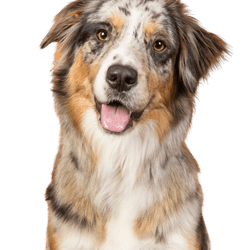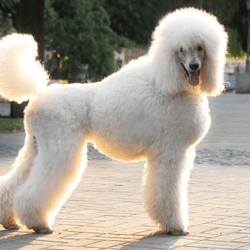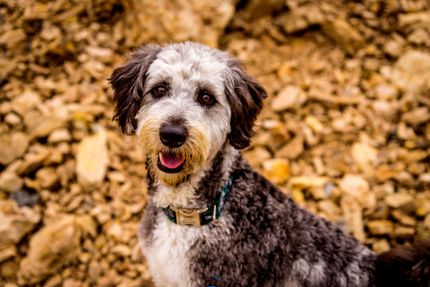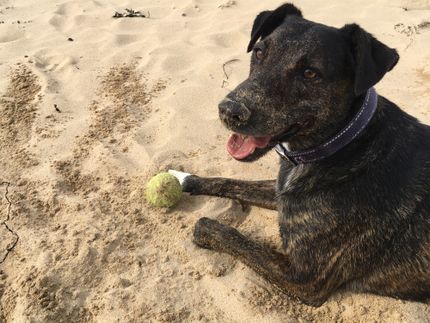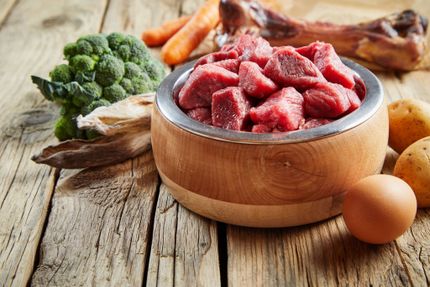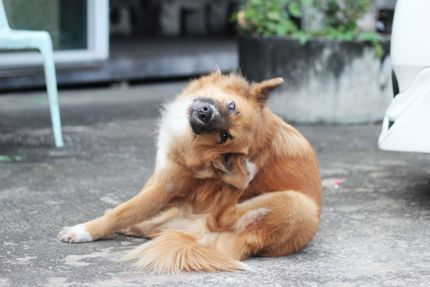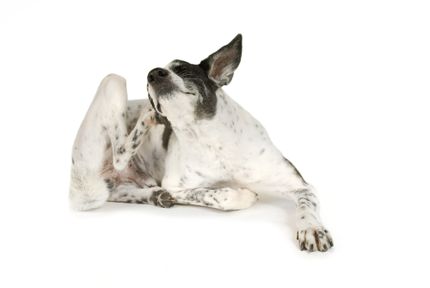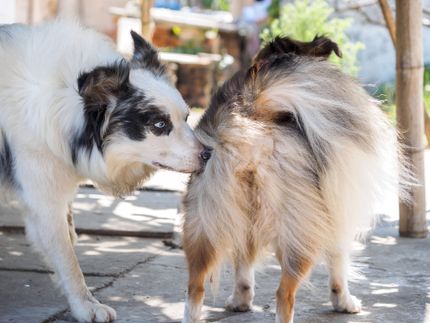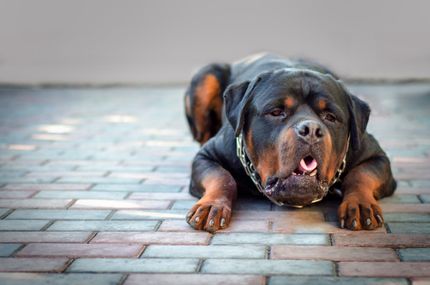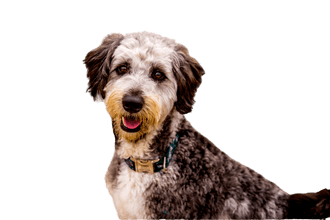
Aussiedoodle:Australian Shepherd and Poodle Mix
Aussiedoodle
Facts & Origin
What is the origin of the Aussiedoodle?
To speak of an Aussiedoodle as a mixed breed is not quite correct. This is because it is a hybrid dog. This means the planned mating of two parent animals of different breeds. Among other things, hybrids are created to unite positive characteristics of two breeds in one dog. One part of the Aussiedoodle is the poodle, a breed that has probably been existing in Western Europe for 400 years. This assumption is based on the work "Historica animalium" of the natural scientist Conrad Gesner dating back to the 16th century. In it he describes a dog that was shorn from the shoulders to the tip of its tail. The conspicuous shearing also had a special purpose in the centuries that followed: since poodles were used to hunt waterfowl, the shortened fur made it easier for them to swim. From the 18th century onwards, the poodle receded more and more into the background as a hunting companion, but it caused a sensation as a society dog of the nobility and the upper social class. Since 1930, the breed has been recognised by the international association FCI. The Australian Shepard did not obtain this registration until 1996. They originate in North America, where they were used for herding meringosheep. Since Basque settlers from Australia brought them to the USA, they received their name accordingly.
What are the breed characteristics of an Aussiedoodle?
As with all animals bred from several breeds, each Aussiedoodle is individual. It cannot be predicted which characteristics will prevail. Since both the poodle and the Australian Shepard are clever animals, there are no problems when learning the basic commands. Furthermore, Aussiedoodles are child-friendly and good-natured.
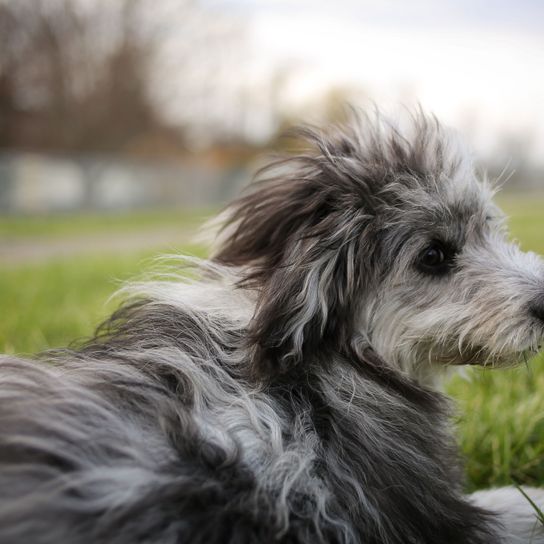
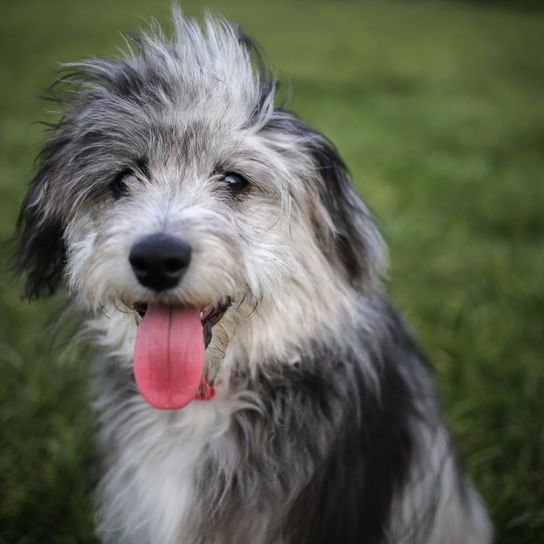
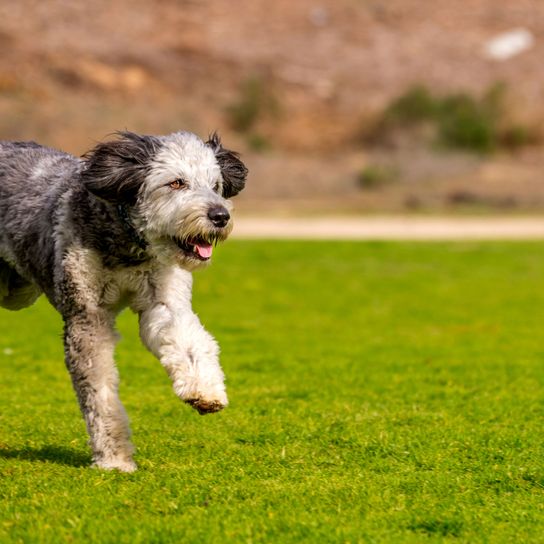
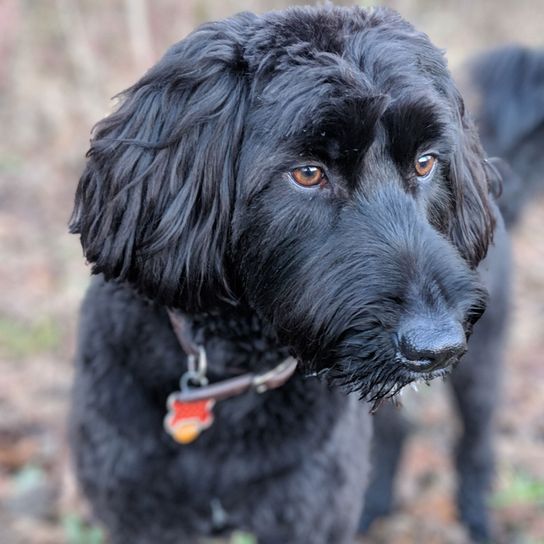
| Alternate Name | - |
| Origin | USA - Germany |
| Life expectancy | 10 - 15 years |
| Care requirements | high-maintenance |
| Activity level | high |
| FCI group | not recognised |
| AKC group | not recognised |
| KC group | not recognised |
More Australian Shepherd mixes
More Poodle mixes
Attitude, character and temperament of the breed
What are typical characteristics of the Aussiedoodle?
Both the Australian Shepard and the poodle have a close relationship with their loved ones, but are sometimes suspicious of strangers. If you decide on an Aussiedoodle, you can look forward to gaining an active companion. However, you should be aware of the fact that they need a lot of stimulation. Most Aussiedoodles love to do dog sports like Agility or Dog Dance. They also enjoy learning tricks. However, if they are not working to full capacity they can develop annoying behaviours like yapping.
Character
Usage

Health and breeding information
What are typical diseases of Aussiedoodles?
The Aussiedoodle may have diseases typical for the breed of the poodle or the Australian Shepard, including
- Especially in miniature poodles, eye diseases like cataracts occur more often
- Epilepsy (poodle)
- Patella problems (poodle)
- Hip joint dysplasia (Australian Shepard)
- Drug Intolerance Multi-Drug Resistance (Australian Shepard)
- Collie Eye Anomaly (Australian Shepard)
As with any dog with floppy ears, regularly checking them is recommended. You may also need to cut the hair inside their ears regularly. Otherwise ingrown hairs can get inflamed.
What is to be considered in regards to Aussiedoodle breeding?
Since it is not a recognised breed, no uniform standards are defined for Aussiedoodle breeding. When you look at an Aussiedoodle puppy, it is best to have the father and mother dogs shown to you. This way you get an impression of how the young dog might look like later on. If the parent animals are purebred, the breeder will show you their pedigree. In addition, you can have a look at the health certificate and the vaccination certificate of a reputable breeder.


Appearance and coat of the Aussiedoodle
What your Aussiedoodle ends up looking like depends on which parent animal prevails. Poodles are known for their curly coat. Since it just keeps on growing and does not fall out by itself, they have to be shorn regularly. Furthermore, the poodle has no undercoat and does not shed. The Australian Shepard on the other hand changes his coat twice a year. If your darling's coat is similar to that of a poodle, regular grooming pays off. It is best to go to a dog salon the first few times, and with a little practice you will be able to cut their fur appropriately at home. Whether the Aussiedoodle is suitable for a household of allergic persons or not depends on their coat. In general, Aussiedoodles produce less skin scales than other dogs, which might result in you as an allergy sufferer being able to cope with it better.
What is the average size of an Aussiedoodle?
The Aussiedoodle is available in different sizes
| Aussiedoodle Standard | 45cm and taller |
| Aussiedoodle Mini | max. 45cm |
| Toy Aussiedoodle | max. 35cm |
How much does an Aussiedoodle weigh?
Depending on its size, the Aussiedoodle weighs between 11 and 32 kilograms.
What is the life expectancy of an Aussiedoodle?
An Aussiedoodle reaches an age of 12 to 15 years.
| Fur length | long - medium |
| Fur | flat coated - curly |
| Ear shape | Standing Ears - Floppy Ear |
| Tail | fanned out - lang |
| Anatomy | sporty, slim, sporty |
| Size ♀ | 40 - 60 cm |
| Weight ♀ | 10 - 35 kg |
| Size ♂ | 30 - 50 cm |
| Weight ♂ | 10 - 35 kg |
| Suitable For | suitable for allergy sufferers |
Colors



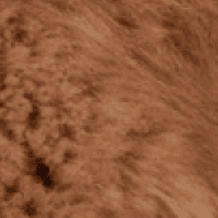
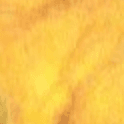
Known Diseases
Elbow dysplasia (ED)
Elbow joint dysplasia is a chronic disease complex of the elbow joint of fast growing dog breeds.
Hip dysplasia (HD)
The hip dysplasia or hip joint dysplasia of the dog (HD) is a maldevelopment of the hip joint.
MDR1 defect
The MDR1 defect is a defect in the MDR1 gene that can occur in some breeds of dogs and in humans. This results in the deficient or absent synthesis of a certain protein which is an important component of the blood-brain barrier, leading to hypersensitivity to some drugs.
Progressive Retinal Atrophy (PRA)
Progressive retinal atrophy (PRA) is a slowly progressive death of the retina in dogs.
Numbness
Often occurs in old age.
Eye diseases
Often occur with allergies and intolerances.
Epilepsy
Definition: Dog has epilepsy if, for example, at least two epileptic seizures occur more than 24 hours apart.
Cataract
Cataracts are still one of the most common causes of blindness, even in dogs.
Patellar problems
Problems with the Patellar can be a displacement or weak kneecap, which is one of the most common causes of lameness in dogs, also because of overweight.
FAQ
-
An Aussiedoodle is a good watchdog, companion dog and also family dog if the family is very active.
-
An Aussiedoodle is a hybrid dog breed and requires its own breeding for it. There are no recognized breeders from breed clubs, only established places where you can acquire this particular breed. Due to the rumor that they are hypoallergenic and may also have the great coloring of the Australian Shepherd, the dog costs 2400-4000 euros.
Useful Articles
You can find articles that might interest you in the dogbible blog to match your favorite breed.
Visit our magazineto stay up to date on dog trends.
To find out more, view our Privacy Policy
Find here the breed that suits you and find out what character traits it has. Here you can also learn more about the origin, size and weight of your favorite breeds.
Matching your favorite breed, you'll find articles that might interest you on the dogbible dog blog.
Hiking with dog in Saxon Switzerland
Alopecia in dogs - causes, symptoms, diagnosis, prevention and treatment.
